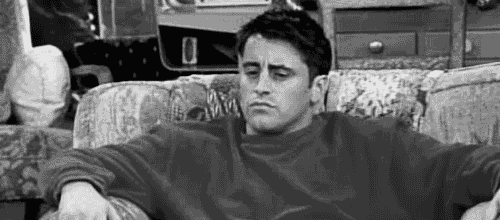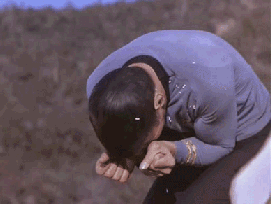Publetariat Editor’s Note: In this post, historical fiction writer M. Louisa Locke shares some of her research findings about Victorian-era San Francisco. This is an informative post for any author who writes historical fiction, as it reflects the level of detail to which such an author must go to create realism in her work.
I have embarked upon writing Bloody Lessons, the third book in my Victorian San Francisco Mystery series that features Annie Fuller and Nate Dawson, which means I am creating a whole new raft of secondary characters. And, as I have done in previous books, I am carefully considering the specific social make-up of San Francisco as I do so.
What follows is a brief summary of the social structure of San Francisco in 1880 (primarily from my dissertation, Like a Machine or an Animal) and how this has influenced some of the choices I have made in developing my characters in Maids of Misfortune and Uneasy Spirits, the first two books in my mystery series.
Brief Summary:
“In 1880 San Francisco, with a population of 233,959 residents, was the ninth largest city in the United States. Located at the end of the peninsula that separates the Bay of San Francisco from the Pacific Ocean, this city of hills, sand dunes, fogs, and mild temperatures had been only a small village called Yerba Buena less than forty years earlier. This small village was one of the chief beneficiaries of the incredible influx of people into the region after the discovery of gold to the north in the winter of 1847-48. In the early years of the Gold Rush, the town grew by over 1000 percent. Even in the 1860s San Francisco still grew at a rate of over 160 percent, but into the next decade the rate of growth slowed considerably to 57 percent, and the city would continue to grow at ever slower rates throughout the century.
“High sex ratios (more males than females) have traditionally accompanied high rates of growth, and this was particularly true in the Far West where so much of the initial growth in population was due to the in-migration of young single men searching for gold. San Francisco followed this rule, although it consistently had a more balanced ratio than did the state as a whole. Nevertheless, by 1880, as the city increasingly became the destination of families or as the earlier settlers either married or sent for their wives and children to join them, much of the imbalance in the sexes had disappeared. Most of the remaining imbalance reflected the large number of Chinese in the city, since most of the Chinese who immigrated to America at this time were males. In fact, among some groups in the city, the Irish for example, women now outnumbered men.
“As the number of women in the city grew, the proportion of families and children did as well. The percentage of adult males who lived in family households rose from fifteen percent in the 1850s to forty percent in 1880, and the average number of children per family rose as well. In addition, the city’s residents were now more likely to have been born in the Far West, and by 1880 over sixty percent of the city’s native-born population had been born in California.
“A significant number of the parents of these California born city residents were immigrants who had traveled to the Far West. In fact, from the beginning of San Francisco’s development, immigrants were more likely than the native-born migrants to be married or to bring their families with them when they moved to the city. In 1880 nearly 45 percent of San Francisco’s population was foreign-born, and if those native-born persons with foreign parents are considered, the proportion of residents with foreign parentage rises to over 74 percent.
“Reflecting national patterns of immigration, the foreign-born population of San Francisco consisted primarily of immigrants from Ireland (29.5%) the German Empire (19.1%) and Great Britain (9.6%). People from these three areas comprised over half of all the immigrants living in the city in 1880. However, the ethnic composition of San Francisco at this date did deviate from the ethnic composition of cities elsewhere in the nation in one substantial way. Chinese made up the second largest number (20.3%) of the foreign-born in the city; this was a proportion that was vastly greater than could be found anywhere outside of the Far West. In addition to the Chinese, Irish, German, and British immigrants that comprised the bulk of San Francisco’s foreign-born population, smaller numbers of French, Canadian, Scandinavian, and Mexican immigrants gave San Francisco an exceptionally cosmopolitan flavor. One Eastern visitor in 1880 felt that the city appeared even more cosmopolitan than New York City, commenting that when she asked a question on a San Francisco Street, it was ‘answered in a dozen different tongues.’ (Dall, My First Holiday 1881)
“The inhabitants of San Francisco did not share equally in the economic opportunities of the period. A foreign birthplace or a specific ethnic heritage clearly influenced entry into certain jobs and the possibilities of advancement. As a result, different groups clustered on different rungs of the city’s social ladder. Native-born residents of both sexes were much more likely than immigrants to hold white-collar jobs, while they were much less likely to work as semi-skilled or unskilled laborers. Native-born males in the city showed a greater degree of upward mobility as well.
“On the other hand, within the foreign-born population of San Francisco the occupational patterns of specific ethnic groups differed significantly, and some groups had better success at achieving or maintaining a higher occupational status than others. For example, among both males and females, the tendency of German immigrants to fill jobs within the lower white-collar ranks, particularly as petty merchants, meant that the occupational pattern of Germs did not deviate substantially from the pattern of native-born workers.
“Many of the young men who came to America from German in the nineteenth century first set up as peddlers on the east coast and then moved to the Far West to take advantage of the boom engendered by the Gold Rush. There they often worked first in the interior mining of farm towns until they could get enough capital to relocate in San Francisco as retail or wholesale merchants or manufacturers.
“By 1880 these Germans represented 34 percent of the merchant population of the city, comprising a much higher fraction of the merchant class than they did of the total city population. These German merchants concentrated in clothing and dry goods, and in the cigar trades, and they had a high degree of persistence in the city. Because Germans, including German Jews, played such an important role in the city’s merchant community, this group occupied a unique and favored position in the social hierarchy of San Francisco. While ethnic and religious prejudice against the Germans did exist in the city, and although Germans were not totally integrated into the ranks of the native-born elite, German Jews seemed to experience much less discrimination in San Francisco than they did within any comparable city in the nation in this period.
“While the backgrounds and eventual occupational success of the Germans and English permitted these two groups entrance into the social elite of the city, the Irish faced much greater obstacles. Their backgrounds of rural poverty and inadequate education constituted a handicap in employment, even though many of the Irish had settled on the east coast before traveling west. As a result, the Irish in San Francisco were under-represented in the white-collar or merchant occupations of the city, and as many as a third of them worked as common laborers in 1880. However, the Irish in San Francisco were upwardly mobile, for not only were Irish males increasingly more likely to work in white-collar jobs between 1850 and 1880, but their native-born children gained in occupational status.
“Native-born children of the Irish found that their greater experience with urban life and their greater access to education offered many of them a chance to escape from the ranks of unskilled labor into skilled, semi-skilled and white-collar jobs.
“Although proportionally fewer Irish climbed to the top of the business elite in San Francisco, this group was certainly not excluded from the bastions of power within San Francisco. As Burchell has pointed out, ‘The Irish in San Francisco fought their way up the political ladder in the usual fashion and met with the normal nativist response. But their success was more complete by 1880, even by 1870, than that of their group in other major cities.’ (Burchell The San Francisco Irish 1979) Partly because of their sheer numbers and partly because of the unusual degree of fluidity within early San Francisco, the Irish found relatively greater political and economic success in this city.
Social Structure and my character choices
The main protagonists in my mystery novels, Annie Fuller, a widowed boarding house owner, and Nate Dawson, a lawyer, represent the dominant group among the middle and upper classes of San Francisco residents living in the city 1880 because they are of native birth and parentage. Annie was born in the city, and Nate moved to California with his family as a young boy. While both live in boarding houses, (San Francisco was famous for hotel and boarding house living for all classes) Annie’s boarding house, containing a mother and child, a married couple, two unmarried sisters, a single woman, and two single men, reflects a city that was no longer the boom town of only young single men it had been thirty years earlier.
The servants working in Annie’s boarding house, Beatrice O’Rourke and Kathleen Hennessey, are of Irish heritage, (as is Nellie, the Voss parlor maid in Maids of Misfortune,and Biddy, Kathleen’s friend and a servant in the Frampton house in Uneasy Spirits) because the Irish not only made up the largest percentage of working class residents of any ethnic group in the city, but domestic service was the occupation held by a majority of women of Irish birth.
At the same time, as mentioned above, the Irish were extraordinarily successful in achieving political power in San Francisco, one result being the large number of Irish found in city employment, including the police force. Hence my decision to make Beatrice O’Rourke’s deceased husband and her nephew, Patrick McGee, be Irish police officers.
However, when I was looking for a non-Irish immigrant to hold the job of cook in the Frampton household, it was easy to decide that the uncommunicative cook, Mrs. Schmitt, should be German since German immigrant women were almost as likely to hold domestic service jobs as were the Irish.
On the other hand, while Irish and German servants would have been common in any middle class household in any American city outside of the South during this time period, Chinese males servants like Wong, who worked in the Voss home in Maids of Misfortune, would have been rarely found in any city outside the Far West. In later posts I will elaborate about the unique pattern of Chinese migration to San Francisco.
Finally, while I haven’t been explicit about the ethnic heritage of Annie Fuller’s prize boarders, Herman and Esther Stein, their names represent their German heritage. I chose this background for them because I wanted to provide an example of that interesting group of San Francisco residents, wealthy German merchants, bankers, and manufacturers.
In the book I am working on, Bloody Lessons, a good proportion of the minor characters are going to be teachers. I will need to keep in mind that the majority of teachers in San Francisco, as was true for the nation, were females, and that the men who did teach dominated the higher grades and administrative positions. I will also need to keep in mind the unusually important role of immigrants and their offspring in San Francisco.
The ethnic composition of San Francisco teachers reflected the fact that nearly two-thirds of San Francisco’s residents were either immigrants or the children of immigrants. As a result, 60 percent of the young women who taught in San Francisco in 1880 were native-born with immigrant parents, and another 12% were foreign-born. The percentage of female teachers in San Francisco who were of foreign birth or heritage was actually double that of the percentage found in either Portland or Los Angeles in that year.
These are just some of the ways I try to ground my mysteries in an accurate portrayal of the past, and I hope you found it added to your enjoyment of the series.
For those of you who haven’t yet read either Maids of Misfortune or Uneasy Spirits, you might check out the promotional offerings below.
Maids of Misfortune will be FREE on KINDLE Monday-Tuesday August 20-21 and
Uneasy Spirits will be FREE ON KINDLE Tuesday-Wednesday August 21-22.
AUDIOBOOK Maids of Misfortune
This is a reprint from M. Louisa Locke‘s blog.






